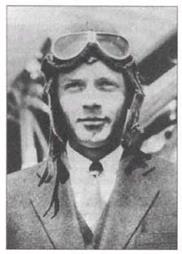Charles Lindbergh, the Reluctant Hero
For most of us, even those of us born long after he achieved his greatest fame, Charles Lindbergh still is among history’s most celebrated and revered personalities. But Lindbergh’s impact on flying goes far beyond his most famous exploit—the 1927 flight that won him the Orteig prize and world fame. He was a pioneering air mail pilot, a crusader for political causes, and the man perhaps most responsible for helping to create an industry that has grown into one of the largest in the world: passenger airlines.
 |
Turbulence
Lucky Lindy
Charles Augustus Lindbergh was born into a Minnesota family that already had its share of public acclaim. His father, Charles A. Lindbergh Sr., was a longtime U. S. congressman, and his mother, born Evangeline Land Lodge, was a popular schoolteacher in his hometown of Little Falls.
Lindy attended the University of Wisconsin with an eye toward becoming an engineer. He was a poor student who didn’t have much interest in books, preferring instead to get his hands dirty. He even tried his hand at farming. By the time Lindbergh was in his sophomore year, it had become perfectly clear to him and to his professors that he wasn’t cut out to be an academic. To the relief of the university administrators, Lindbergh dropped out and began his flying career.
|
Plane Talk |
In order to scrape up the money he needed to buy his first airplane, Lindbergh signed with a traveling troupe of daredevil pilots-called “barnstormers’—as a parachute jumper and wing walker. The job required Lindbergh to leap out of airplanes wearing primitive parachutes, which at the time had a disturbing tendency not to open. Even when they did open, the wearer could still fall fast enough to break a leg on landing.
Lindbergh the Daredevil.
Lindbergh began his flying career billed as “Daredevil Lindbergh.” He became an expert parachutist who thrilled crowds with death-defying stunts. What’s more, as a wing walker, Lindbergh climbed out of the cockpit while the plane was in the air, and clambered around on the wings. He sometimes hung from the lower wing with nothing between him and the ground but a firm grip. To make the job even more dangerous, wing walkers usually refused to wear a parachute because of its bulk and weight. The fact that Lindbergh simply survived his barnstorming stint was enough to justify the nickname “Lucky Lindy!”
|
It wasn’t long after Charles Lindbergh began his air mail career that he began to dream of greater things. It was during a routine flight that Lindy first realized he could write aviation history. |
|
|














